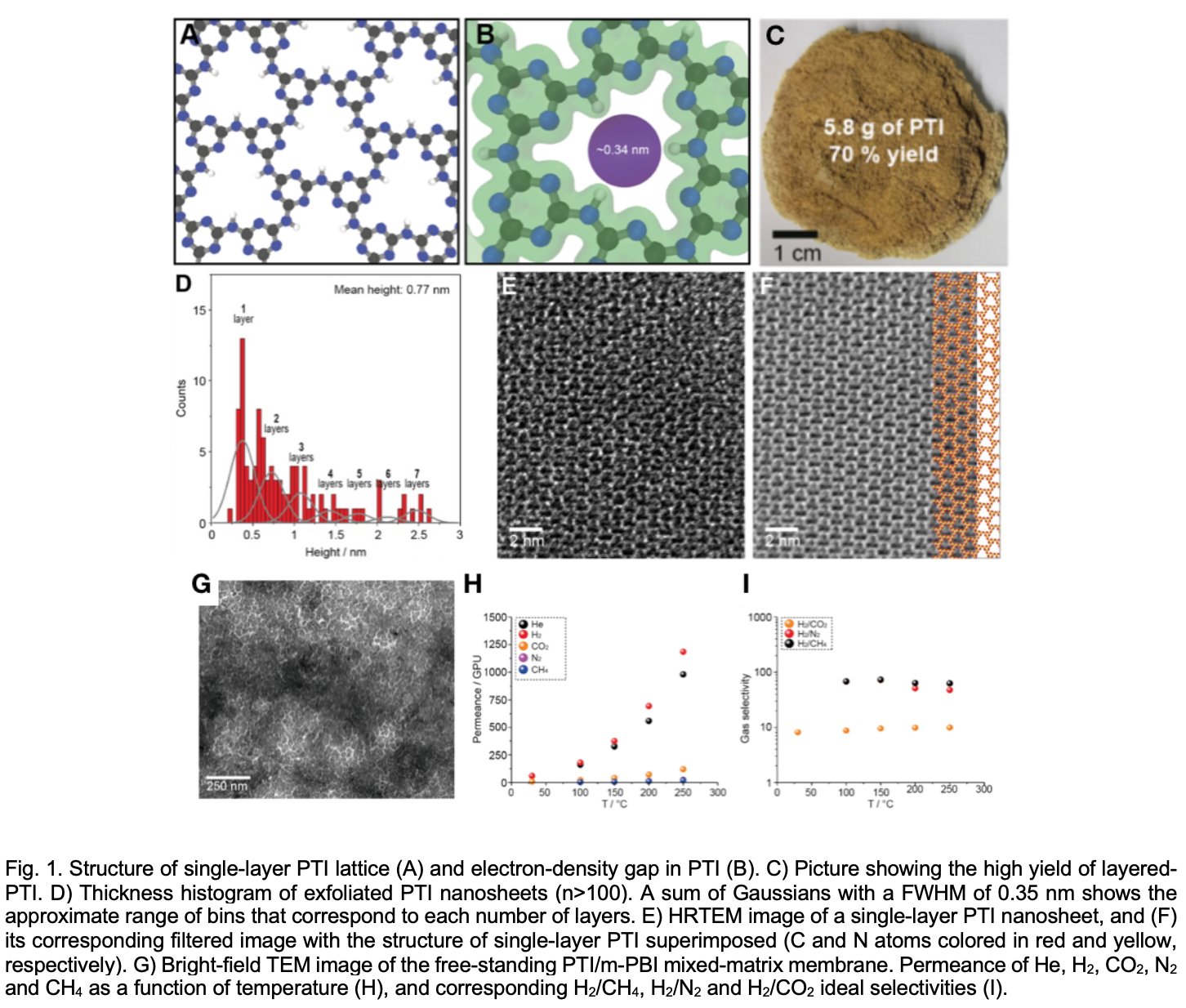(660b) Synthesis of Crystalline Atom-Thick g-C3N4 Nanosheets and Application in High-Temperature Hydrogen Purification.
AIChE Annual Meeting
2020
2020 Virtual AIChE Annual Meeting
Materials Engineering and Sciences Division
Synthesis and Application of Inorganic Materials II: Application/Separations
Friday, November 20, 2020 - 8:15am to 8:30am
In this presentation, I will discuss our recent success in i) synthesizing high-crystalline layered-PTI in a scalable manner, ii) highly-efficient exfoliation of single-layer PTI nanosheets, and iii) fabrication of exfoliated PTI-based membranes for hydrogen sieving [5].
Currently, layered-PTI is synthesized in potentially unsafe vacuum ampules in milligram quantities. Its crystallization takes place in molten LiCl where the role of molten salt is widely believed to be that of a solvent. Here, I will discuss our results that negates this hypothesis and show that the role of molten LiCl is primarily to provide Li+ and Cl- as structure directing agent for ordered condensation of melam. As a result, synthesis of PTI could be optimized to a scalable and safe ambient pressure synthesis route leading to several grams of layered PTI platelets in a single batch with 70% yield (Figure 1C).
I will further discuss high-yield exfoliation of PTI using an anhydrous solvent strategy. The triangular nanopores of PTI have never been reported before, attributing to the fact that single-layer PTI have not been isolated so far. A one-step exfoliation using anhydrous DMAc will be discussed which leads to a high percentage of atom-thick PTI nanosheets (Figure 1D) evidenced by the observation of the triangular nanopores of graphitic carbon nitride for the first time (Figure 1E and F).
Finally, gas permeation studies and first-principles simulations demonstrating the ability of PTI nanopores to sieve He and H2 from larger molecules will be discussed. Briefly, PTI nanosheet were incorporated in a polybenzimidazole (PBI) matrix (Figure 1G) leading to mixed matrix membranes with H2 permeance reaching 1500 gas permeation units, and H2/CO2, H2/N2, and H2/CH4 selectivities reaching 10, 50, and 60, respectively, at 250°C (Figure 1H and I).
References
- J. Bojdys, J. O. Müller, M. Antonietti, A. Thomas, Ionothermal synthesis of crystalline, condensed, graphitic carbon nitride. Chem. - A Eur. J. 14, 8177–8182 (2008).
- Wirnhier et al., Poly(triazine imide) with intercalation of lithium and chloride ions [(C3N3)2(NHxLi1-x)3.LiCl]: A crystalline 2D carbon nitride network. Chem. - A Eur. J. 17, 3213–3221 (2011).
- Schwinghammer et al., Triazine-based carbon nitrides for visible-light-driven hydrogen evolution. Angew. Chemie - Int. Ed. 52, 2435–2439 (2013).
- S. Miller et al., Single Crystal, Luminescent Carbon Nitride Nanosheets Formed by Spontaneous Dissolution. Nano Lett. 17, 5891–5896 (2017).
- L. F. Villalobos, M. T. Vahdat, M. Dakhchoune, Z. Nadizadeh, M. Mensi, E. Oveisi, D. Campi, N. Marzari, K. V. Agrawal, Large-scale synthesis of crystalline g-C3N4 nanosheets and high temperature H2 sieving from assembled films. Sci. Adv. 6, eaay9851 (2020).

